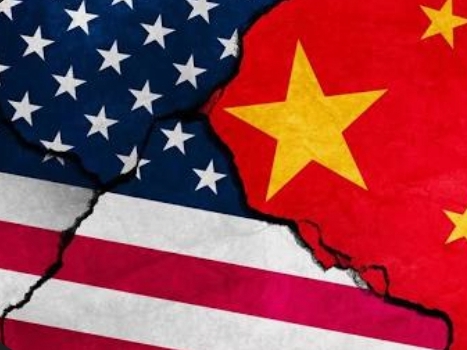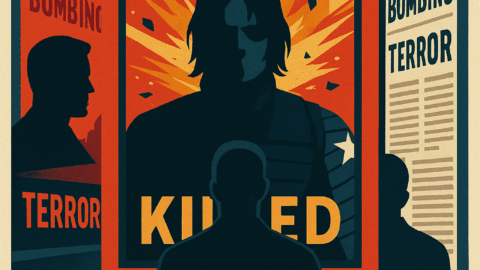The Illusion of Conflict and the Reality of Control: A Closer Look at the Machinery of Power
Introduction:
For decades, the world watched what was sold as a geopolitical chess match between two superpowers — the United States and the Soviet Union. Governments, media, and educational institutions framed this Cold War as a battle between freedom and communism, democracy and dictatorship, capitalism and socialism. But was it truly a war, or was it a carefully crafted illusion — a stage play designed not for the elites, but for the masses?
The Manufactured Conflict:
There was no direct war between the United States and the Soviet Union. While proxy wars raged and billions of dollars were funneled into military build-ups, the top echelons of power in both nations — and in others — appeared to serve a common agenda: the advancement of a centralized global power structure. The “Cold War” functioned less as a true conflict and more as a narrative device to justify defense budgets, surveillance programs, and control of populations on both sides.
The True Agenda:
The end goal? The formation of the New World Order — a transnational system where control is maintained not through open warfare, but through economic manipulation, ideological programming, and cultural engineering. This order doesn’t serve the people. It serves the few who operate behind the scenes, orchestrating global affairs with little to no regard for borders, constitutions, or democratic processes.
At the highest levels, many governments are not adversaries but collaborators — members of the same exclusive club. Their allegiance is not to the people they govern, but to the preservation of global dominance, wealth concentration, and mass control.
The Role of the Masses:
To this elite group, the general population serves a single purpose: productivity. We are the “worker bees” — those who mine the resources, build the machines, produce the goods, and maintain the systems that uphold the very power structure that exploits us.
We are, as the analogy goes, livestock — stakes on the table by our own consent. Not because we are incapable, but because we have been trained not to think critically, not to question authority, and not to unite across artificial divisions.
The Power of Consent and Conditioning:
The ruling class doesn’t need to use overt force. Instead, they manipulate through media, education, entertainment, and manufactured fear. People consent to their servitude not through chains, but through beliefs and narratives fed to them over time.
The tragedy is not that we are slaves — it is that many choose to be. The system remains intact because the masses allow it. They mistake comfort for freedom, entertainment for enlightenment, and routine for purpose. As long as the illusion of choice persists, true change remains out of reach.
The Illusion:
The war was never real. It was a distraction. The real war has always been for the human mind — for our loyalty, our attention, and our will. And until more people begin to truly think, to question, and to reclaim their agency, the New World Order will not need to destroy us — it will simply continue to rule us with our consent.
Call to Awareness:
To break free, we must choose to use what separates us from animals — our intelligence. We must wake up, think critically, act courageously, and unite beyond political, racial, or national divisions. Only then can the illusion fade, and true freedom begin.
The United States and China:
The similar illusion is being constructed today between the United States and China — a modern echo of the U.S.–Soviet Cold War dynamic. While tensions, trade wars, and military posturing appear real on the surface, researchers, economists, and whistleblowers suggest that at the highest levels, there’s a shared interest between elites across nations in maintaining global systems of control.
Here’s how this plays out in the present:
The Illusion of Opposing Forces:
Just like the Cold War, the U.S.–China rivalry is presented as a fundamental clash: capitalism vs. authoritarianism, democracy vs. surveillance state. But both nations:
- Rely on globalized corporate infrastructure.
- Support centralized digital economies (think CBDCs, AI, surveillance tech).
- Share interdependent financial systems — U.S. corporations profit from cheap Chinese labor; China holds trillions in U.S. debt.
The “rivalry” fuels military budgets, nationalism, and distraction, while both governments increase control over their own people.
Mutual Advancement of Surveillance & Control:
Both countries:
- Promote mass surveillance (China through the CCP and social credit, the U.S. through Big Tech and data collection).
- Invest in AI, robotics, and biotechnology to replace or control human labor.
- Use fear (of war, pandemics, terrorism) to justify censorship, state control, and the erosion of freedoms.
Different in style, similar in result.
Elites Above Nations:
The wealthiest oligarchs and transnational corporations have no true loyalty to any country. They operate above borders, using political tensions to:
- Influence markets.
- Justify global centralization (e.g., digital IDs, universal basic income, controlled migration).
- Push “solutions” that expand surveillance and reduce personal sovereignty.
A U.S.–China conflict, real or not, creates the narrative needed to justify these solutions.
Manufactured Consent:
The public is emotionally manipulated into tribalism:
- American citizens fear “communist China.”
- Chinese citizens are warned about “Western infiltration.”
- Both sides believe the other is the root of all evil.
This prevents unity, critical thinking, or rebellion against the actual elite structures operating quietly in the background.
Worker Bees 2.0:
Whether in American factories or Chinese mega-cities, the vast majority work to maintain systems that only enrich the few. Most are distracted by survival, entertainment, or ideological programming. The global citizen is being shaped into a digitized laborer — monitored, numbed, and obedient.
Conclusion:
What’s unfolding with China eerily mirrors the Cold War blueprint. It’s less about real conflict and more about theater — a drama that masks global coordination at the top and division at the bottom. The key isn’t to “pick a side” but to rise above the illusion, see the game, and begin reclaiming human sovereignty, truth, and collective purpose.






